
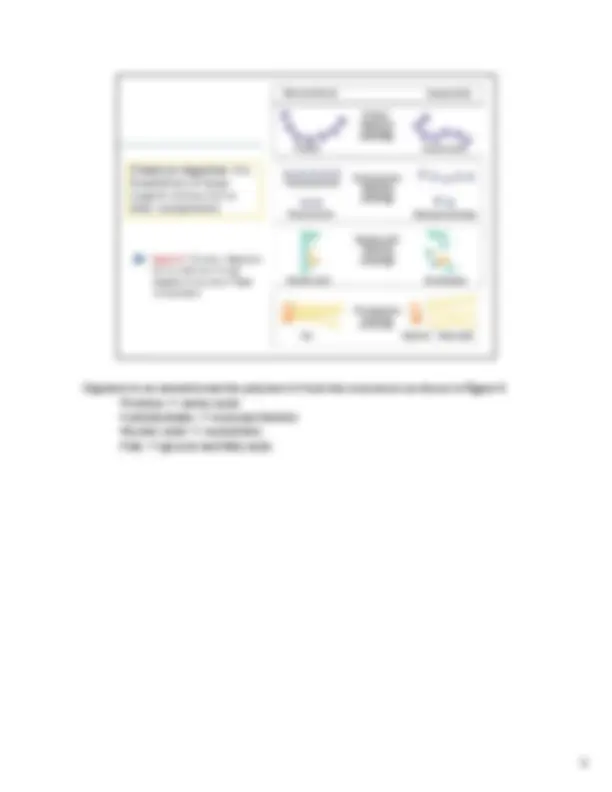
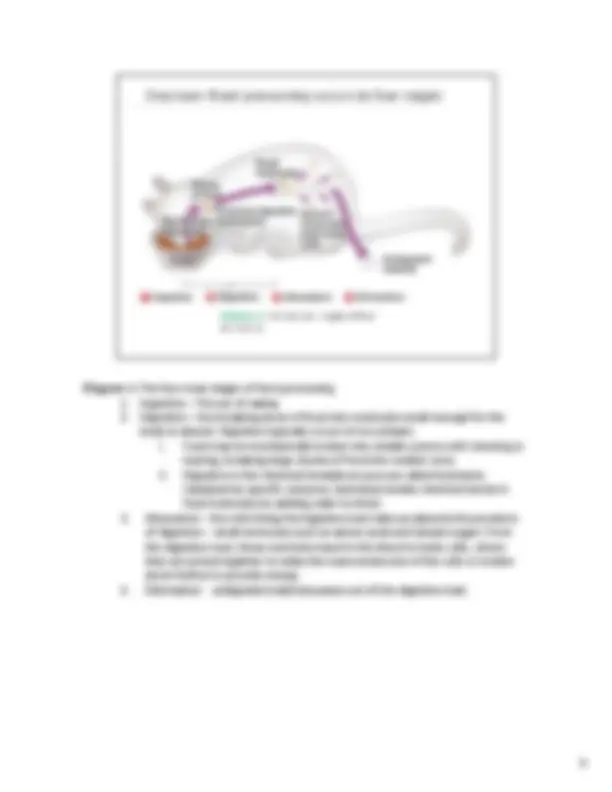
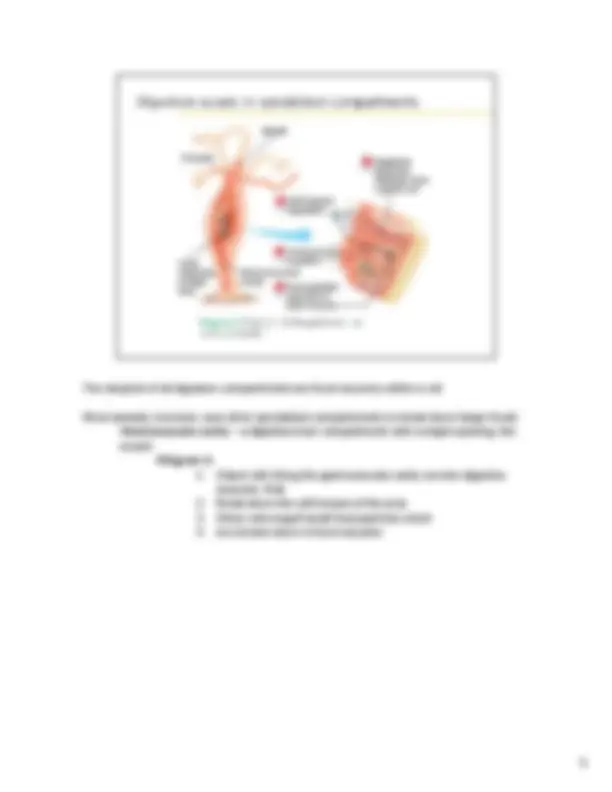
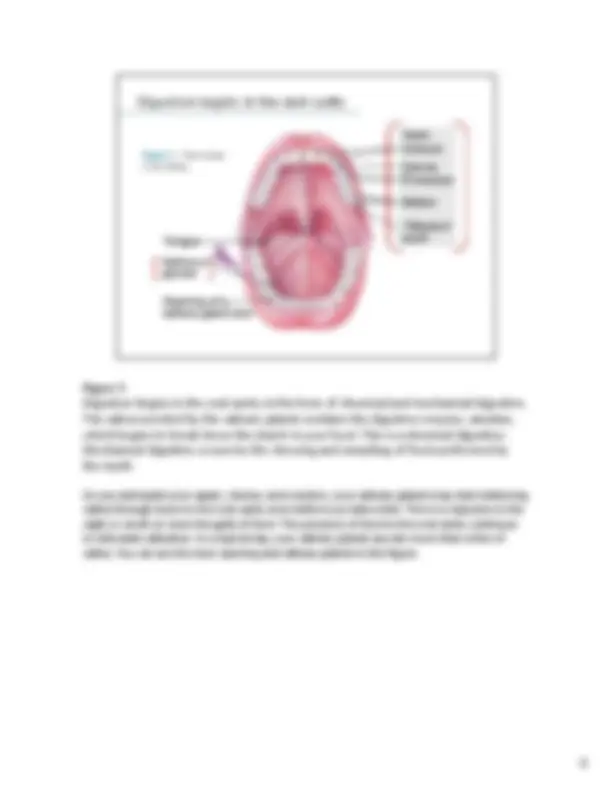
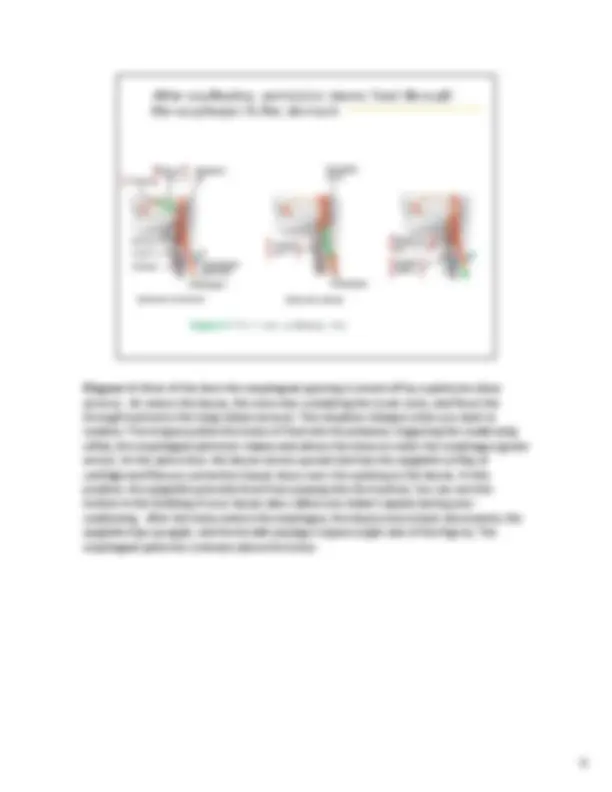
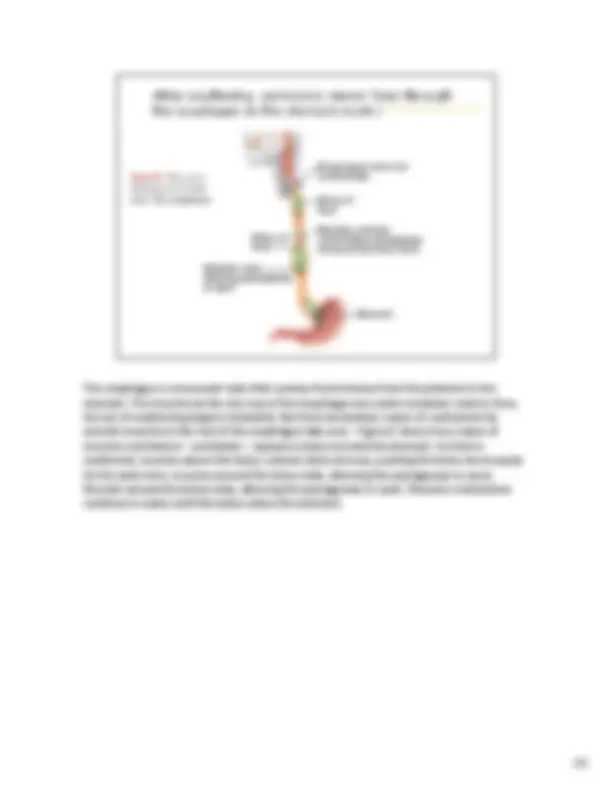
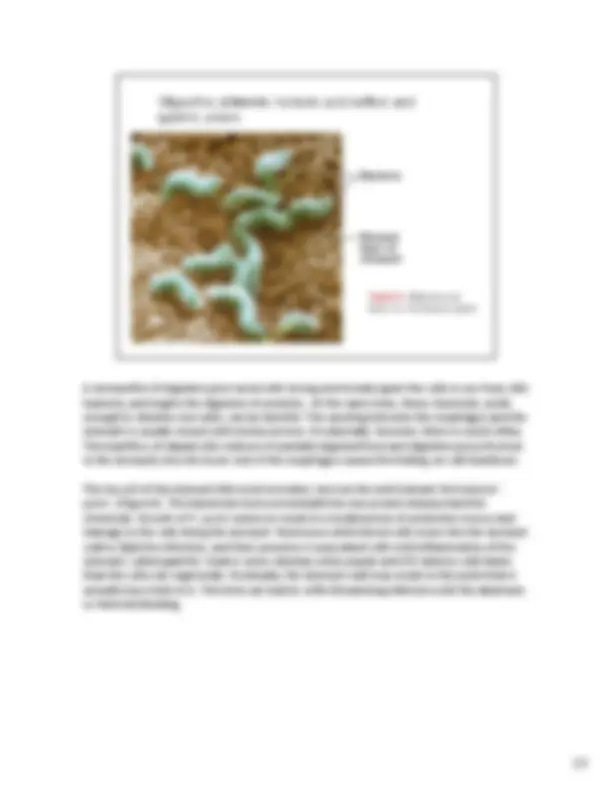
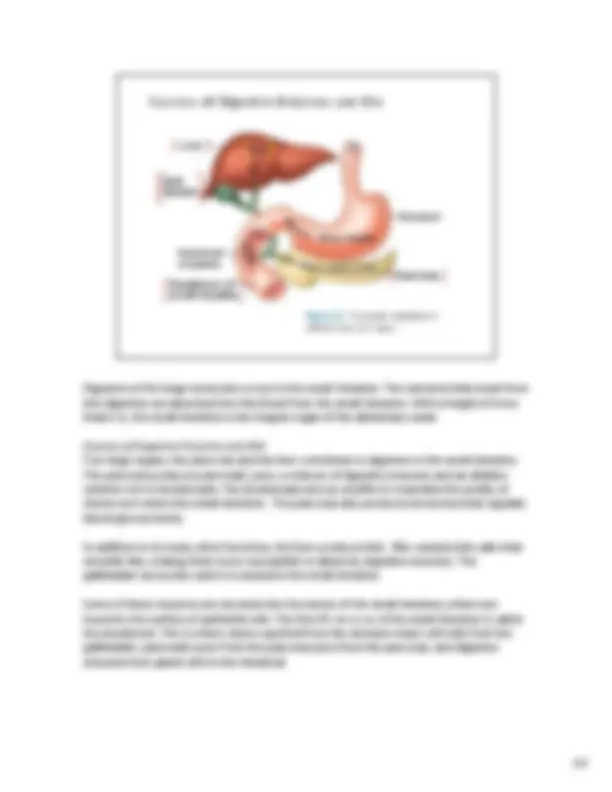
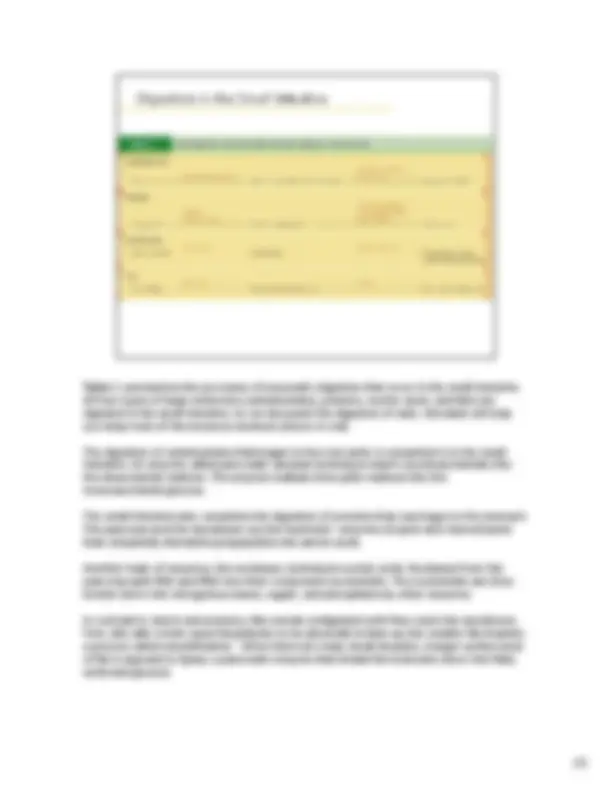

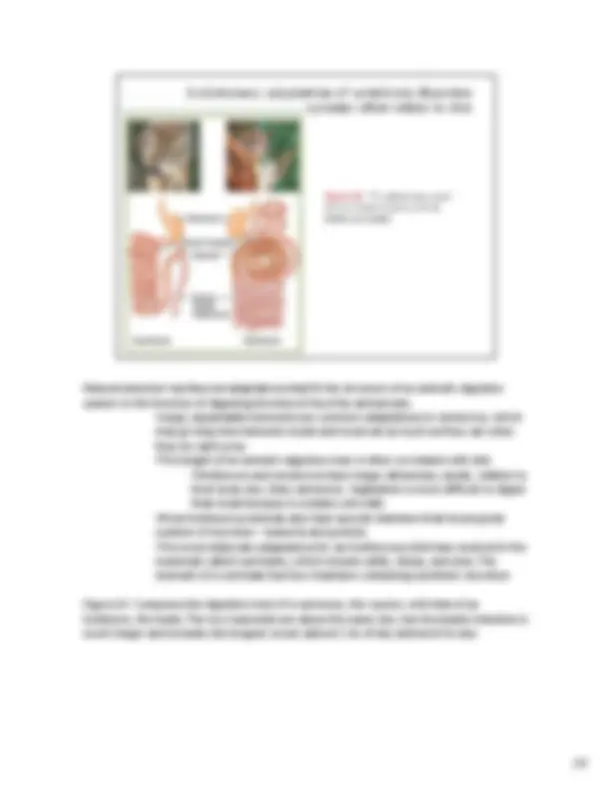
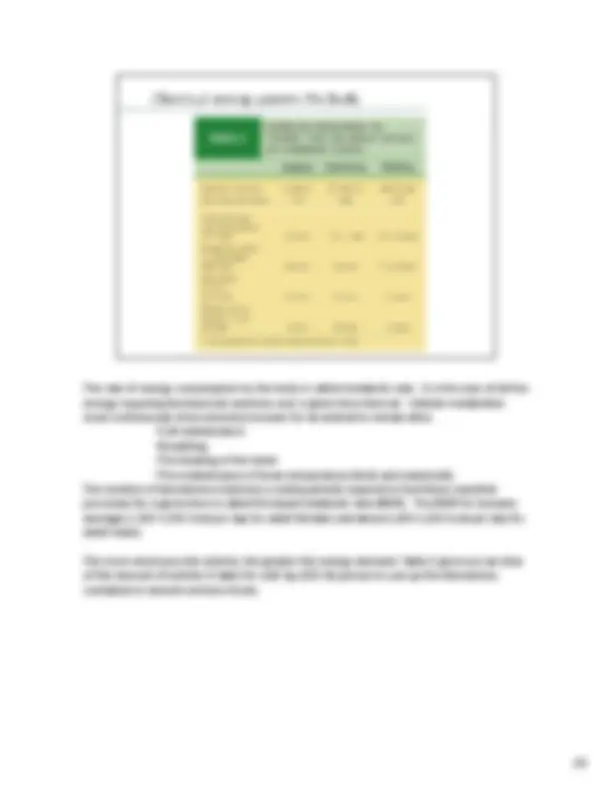
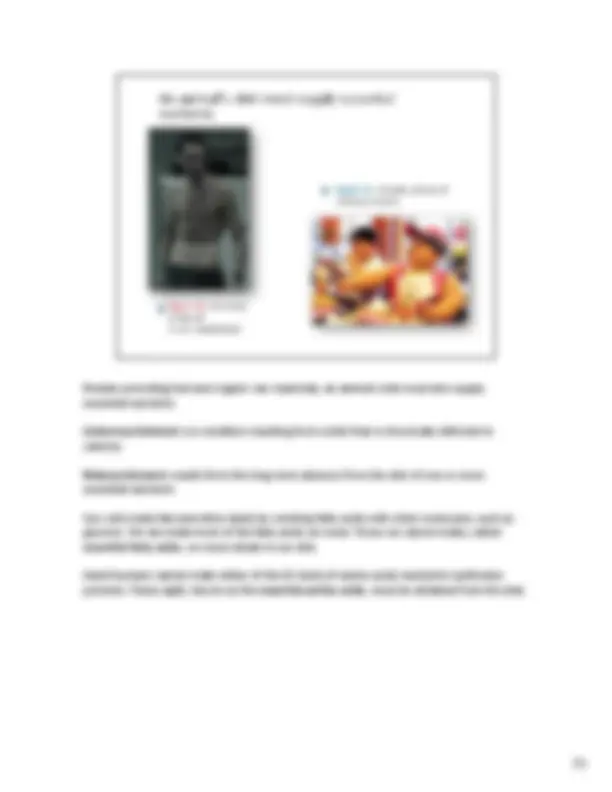
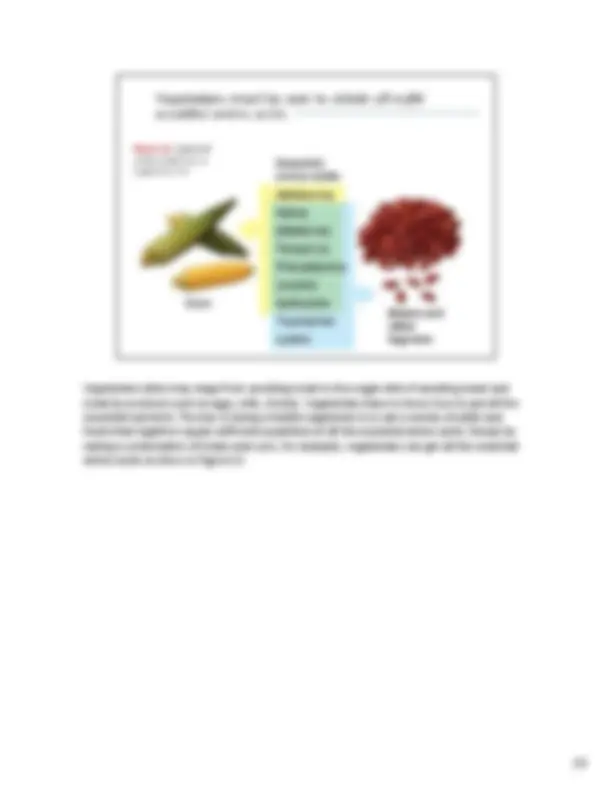
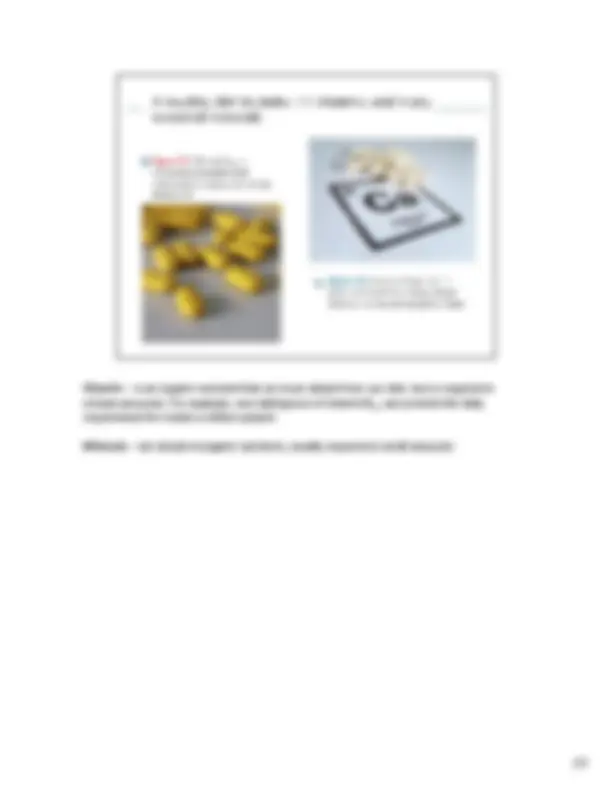
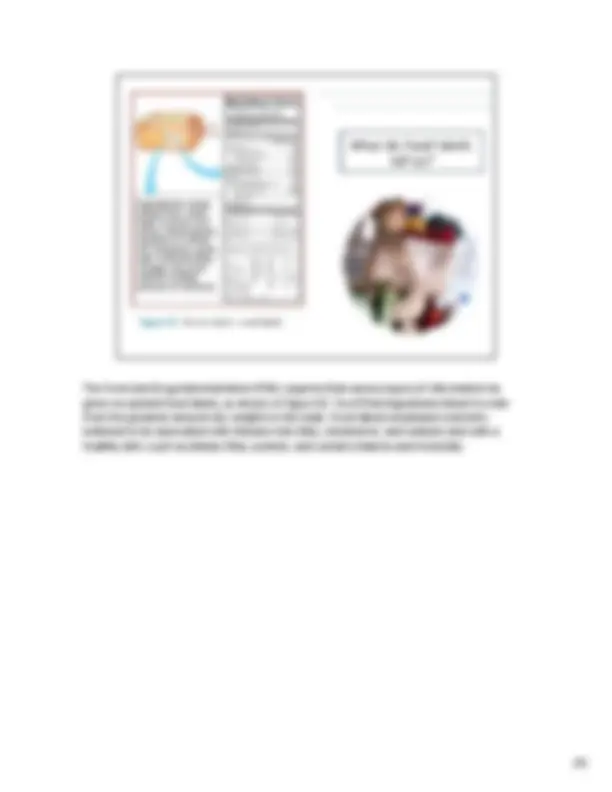
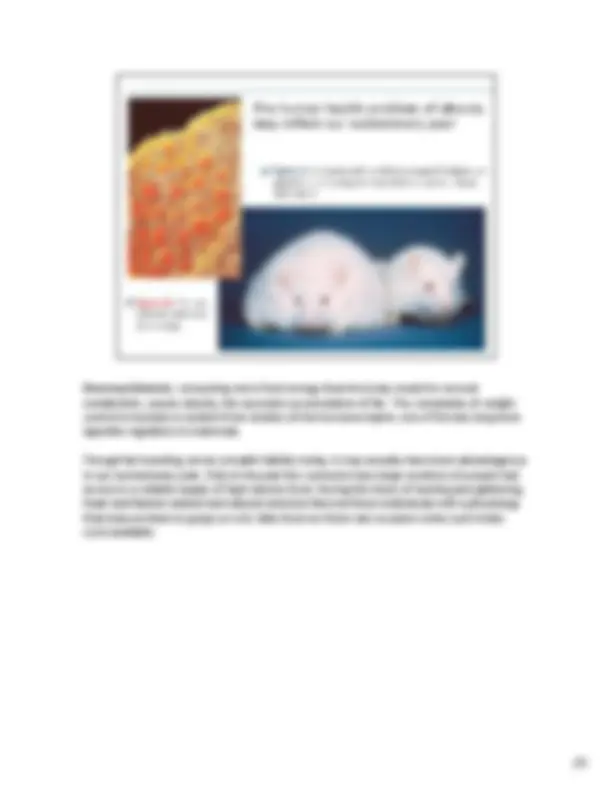


Study with the several resources on Docsity

Earn points by helping other students or get them with a premium plan


Prepare for your exams
Study with the several resources on Docsity

Earn points to download
Earn points by helping other students or get them with a premium plan
Community
Ask the community for help and clear up your study doubts
Discover the best universities in your country according to Docsity users
Free resources
Download our free guides on studying techniques, anxiety management strategies, and thesis advice from Docsity tutors
An overview of different feeding habits of animals, including herbivores, carnivores, omnivores, suspension feeders, substrate feeders, and fluid feeders. It also explains the process of digestion in animals, including ingestion, digestion, absorption, and elimination. various digestive compartments, such as food vacuoles, gastrovascular cavities, and the alimentary canal.
Typology: Exams
1 / 25

This page cannot be seen from the preview
Don't miss anything!


















Herbivores – such as cattle, gorillas, sea urchins, and snails, eat mainly autotrophs (plants and algae)and algae)
Carnivores - such as lions, hawks, spiders, and whales, mostly eat other animals
Omnivores – ingest both plants and animals
Suspension Feeders – Extract food particles suspended in the surrounding water
Substrate feeders – live in or on their food source eat their way out of it
Fluid feeders - obtain food by sucking nutrient-rich fluids from a living host, either a plant or an animal
Bulk feeders - ingest large pieces of food
Diagram 1: The four main stages of food processing 1.1. IngestionIngestion – – The act of eatingThe act of eating
The simplest of all digestive compartments are food vacuoles within a cell
Most animals, however, uses other specialized compartments to break down larger foods
Diagram 3:
Figure 7:
As you anticipate your apple, cheese, and crackers, your salivary glands may start delivering saliva through ducts to the oral cavity even before you take a bite. This is a response to the sight or smell (or even thought) of food. The presence of food in the oral cavity continues to stimulate salivation. In a typical day, your salivary glands excrete more than a liter of saliva. You can see the duct opening and salivary glands in this figure.
The esophagus is a muscular tube that conveys food boluses from the pharynx to the stomach. The muscles at the very top of the esophagus are under voluntary control; thus,stomach. The muscles at the very top of the esophagus are under voluntary control; thus, the act of swallowing begins voluntarily. But then involuntary waves of contraction by smooth muscles in the rest of the esophagus take over. Figure 8 shows how waves of muscles contraction – peristalsis – squeeze a bolus toward the stomach. As food is swallowed, muscles above the bolus contract (blue arrows), pushing the bolus downwards. At the same time, muscles around the bolus relax, allowing the passageway to open. Muscles around the bolus relax, allowing the passageway to open. Muscles contractions continue in waves until the bolus enters the stomach.
The Heimlich maneuver was invented by Dr. Henry Heimlich in the 1970’s. It allows people with little medical training to step in and aid a choking victim. The maneuver is oftenwith little medical training to step in and aid a choking victim. The maneuver is often performed on someone who is seated or standing up. Stand behind the victim and place your arms around the victim’s waist. Make a fist with one hand, and place it against the victim’s upper abdomen, well below the rib cage. Then place the other hand over the first and press into the victim’s upper abdomen with a quick upward thrust. When done correctly, the diaphragm is forcibly elevated, pushing air into the trachea. Repeat this procedure until the object is forced out of the victim’s airway.
A stomachful of digestive juice laced with strong acid breaks apart the cells in our food, kills bacteria, and begins the digestion of proteins. At the same time, these chemicals, acidicbacteria, and begins the digestion of proteins. At the same time, these chemicals, acidic enough to dissolve iron nails, can be harmful. The opening between the esophagus and the stomach is usually closed until a bolus arrives. Occasionally, however, there is a acid reflux. This backflow of chyme (the mixture of partially digested food and digestive juices formed in the stomach) into the lower end of the esophagus causes the feeling we call heartburn.
The low pH of the stomach kills most microbes, but not the acid tolerant Helicobacter pylori (Figure 9). This bacterium burrows beneath the mucus and releases harmful chemicals. Growth of H. pylori seems to result in a localized loss of protective mucus and damage to the cells lining the stomach. Numerous white blood cells move into the stomach wall to fight the infection, and their presence is associated with mild inflammation of the stomach, called gastritis. Gastric ulcers develop when pepsin and HCl destroy cells faster than the cells can regenerate. Eventually, the stomach wall may erode to the point that it actually has a hole in it. This hole can lead to a life-threatening infection with the abdomen or internal bleeding.
Digestion of the large molecules occurs in the small intestine. The nutrients that result from this digestion are absorbed into the blood from the small intestine. With a length of morethis digestion are absorbed into the blood from the small intestine. With a length of more than 6 m, the small intestine is the longest organ of the alimentary canal.
Sources of Digestive Enzymes and Bile Two large organs, the pancreas and the liver contribute to digestion in the small intestine. The pancreas produces pancreatic juice, a mixture of digestive enzymes and an alkaline solution rich in bicarbonate. The bicarbonate acts as a buffer to neutralize the acidity of chyme as it enters the small intestine. The pancreas also produces hormones that regulate blood-glucose levels.
In addition to its many other functions, the liver produces bile. Bile contains bile salts that emulsify fats, making them more susceptible to attack by digestive enzymes. The gallbladder stores bile until it is needed in the small intestine.
Some of these enzymes are secreted into the lumen of the small intestine; others are bound to the surface of epithelial cells. The first 25 cm or so of the small intestine is called the duodenum. The is where chyme squirted from the stomach mixes with bile from the gallbladder, pancreatic juice from the pancreas juice from the pancreas, and digestive enzymes form gland cells in the intestinal.
Absorption in the Small Intestine Structurally, the small intestine is well suited for its task of absorbing nutrients. Its liningStructurally, the small intestine is well suited for its task of absorbing nutrients. Its lining has a huge surface area – roughly 300 m^2 , about the size of a tennis court. Diagram 6 illustrates this extensive surface area results from several kinds of folds and projections. Around the inner wall of the small intestine are large circular folds with numerous small, fingerlike projections called villi (singular, villus). Each of the epithelial cells lining a villus has many tiny surface projections, called microvilli. The microvilli extend into the lumen of the intestine and greatly increase the surface are across which nutrients are absorbed.
Some nutrients are absorbed by simple diffusion; other nutrients are pumped against concentration gradients into the epithelial cells. Notice that a small lymph vessel (yellow) and a network of capillaries (red, purple, and blue) penetrate the core of each villus. After fatty acids and glycerol are absorbed by an epithelial cell, these building blocks are recombined into fats, which are then transported into a lymph vessel. Other absorbed nutrients, such as amino acids and sugars, pass out of the intestinal epithelium and then across the thin walls of the capillaries into the blood.
The liver has a strategic location in the body – between the intestines and the heart. As indicated in Figure 11, capillaries from the small and large intestines converge into veinsindicated in Figure 11, capillaries from the small and large intestines converge into veins that lead into the hepatic portal vein. This large vessel transports nutrients absorbed by the intestines directly to the liver. The liver thus gets first access to nutrients absorbed from a meal. One of its main function is to remove excess glucose from the blood and convert it to glycogen, which is stored in liver cells. In balancing the amount of glycogen it stores with the amount of glucose its releases to the blood, the liver plays a key role in regulating body metabolism.
Liver cells also synthesizes plasma proteins important in blood clotting and in maintaining the osmotic balance of the blood, as well as lipoproteins that transport fats and cholesterol to body cells. The liver has a chance to modify and detoxify substances absorbed by the digestive tract before the blood carries these materials to the heart for distribution. It converts toxins such as alcohol and other drugs into inactive products that can be excreted in urine. The combination of alcohol and some drugs is particularly harmful to the liver.
Natural selection has favored adaptations that fit the structure of an animal’s digestive system to the function of digesting the kindsystem to the function of digesting the kind of food the animal eatsof food the animal eats
Figure 13: Compares the digestive tract of a carnivore, the coyote, with that of an herbivore, the koala. The two mammals are about the same size, but the koala’s intestine is much longer and includes the longest cecum (about 2 m) of any animal of its size.
The rate of energy consumption by the body is called metabolic rate. It is the sum of all the energyenergy--requiring biochemical reactions over a given time interval. Cellular metabolismrequiring biochemical reactions over a given time interval. Cellular metabolism must continuously drive several processes for an animal to remain alive:
The more strenuous the activity, the greater the energy demand. Table 2 gives you an idea of the amount of activity it takes for a 68 kg (150-lb) person to use up the kilocalories contained in several common foods.